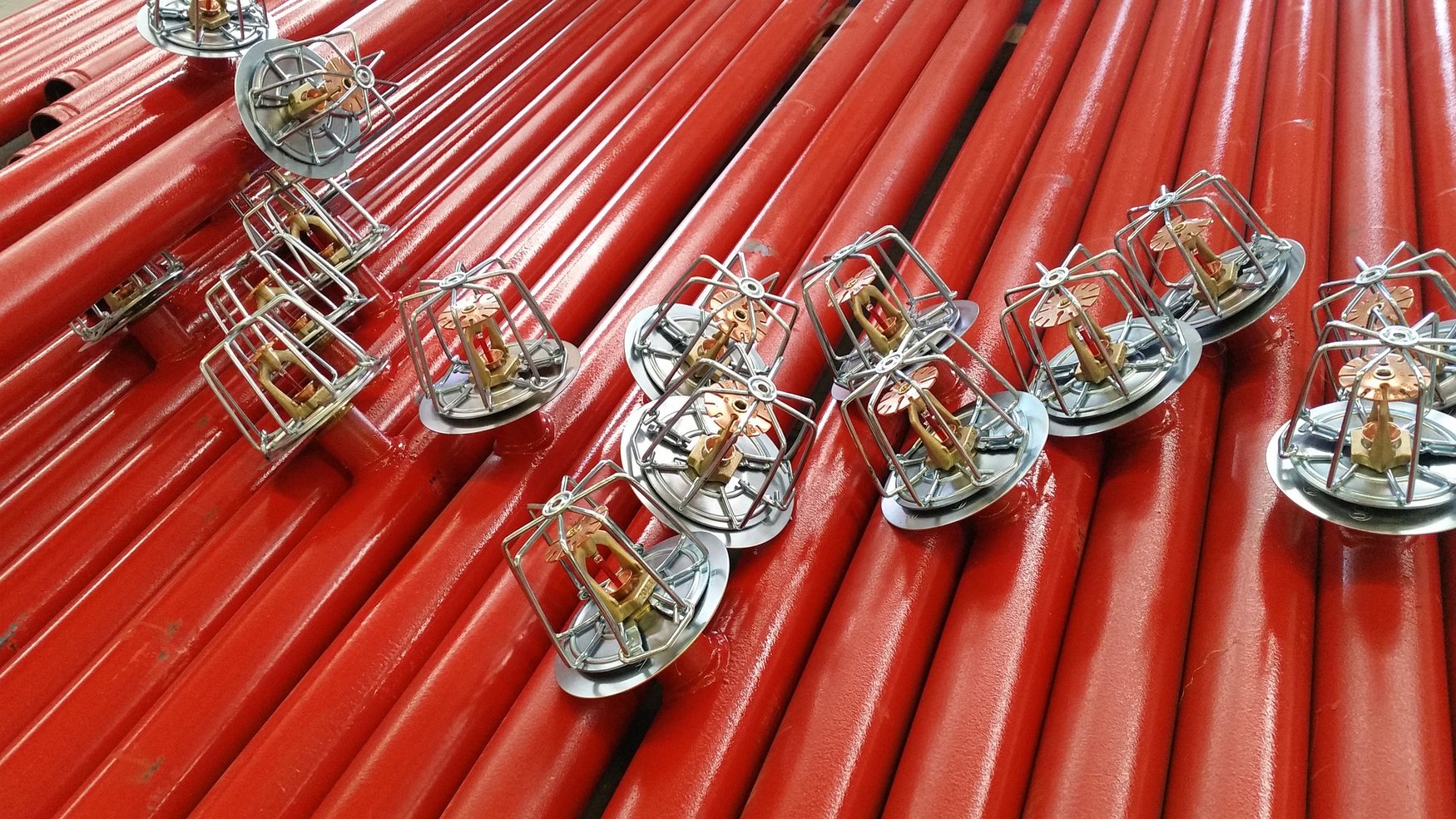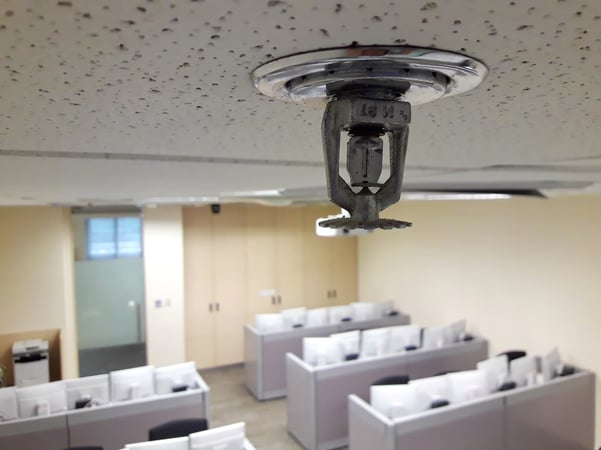Residential Sprinkler Systems in New York City

Automatic sprinkler systems play a very important role in making buildings safe for occupants, since they are one of the first lines of defense if a fire breaks out, along with fire alarms. A properly-designed automatic sprinkler system can quench minor fires by itself, and buys additional time for the fire department if there is a major fire. Due to their life-saving potential, automatic sprinkler systems are subject to various building codes and standards, ensuring they will carry out their function properly.
Protect your property with a fire sprinkler system.
Before any residential building in New York City is approved for occupancy, compliance with the following is required:
NYC Building Code, where most requirements are set forth in Chapter 9 (Fire Protection Systems) and Appendix Q (Modified National Standards for Automatic Sprinkler, Standpipe, Fire Pump and Fire Alarm Systems).
New York City Fire Code- NFPA 13 – Standard for the Installation of Sprinkler Systems
- NFPA 13D – Standard for the Installation of Sprinkler Systems in One- and Two-Family Dwellings and Manufactured Homes
- NFPA 13R – Standard for the Installation of Sprinkler Systems in Low-Rise Residential Occupancies
It is important to note that NFPA Standards 13, 13D and 13R are subject to additional requirements and modifications in the case of New York City, and they are explained in detail in Appendix Q of the NYC Building Code.
When Are Automatic Sprinkler Systems Required in Residential Buildings?
As a general rule, all Group R occupancies in New York City must be equipped with an automatic sprinkler system. The system must cover all fire areas in the building, and the requirement applies for any mixed occupancies where Group R predominates. There are only three types of residential buildings where the NYC code makes automatic sprinkler systems optional:
- Detached one-family dwellings.
- Detached two-family dwellings.
- Townhouses, also known as multiple single-family dwellings.
The only requirement for the automatic sprinkler system to be optional is that these structures must not be taller than three stories above grade, and each dwelling unit must have independent means of egress. If either of these conditions is not met, the sprinkler system becomes mandatory.
It is also important to note than any automatic sprinkler systems in these types of buildings must meet NFPA 13D and any applicable modifications in Appendix Q of the NYC Building Code. This applies regardless of whether the sprinkler system is optional or mandatory.
For larger residential buildings, up to six stories high, the applicable document is NFPA 13R, and Appendix Q modifications apply here as well.
Automatic Sprinkler Systems in Residential Outdoor Areas
In residential outdoor areas like balconies, decks and patios, sprinkler systems are required when the two following conditions are met:
- Automatic sprinklers are already mandatory for the building itself.
- The building is of Type V construction.
Wall sprinklers are permitted, as long as they are located between 1 and 6 inches below structural members. For exterior balconies and decks built from wood joists, the maximum distance allowed for wall sprinklers is 14 inches below the deck.
Water Supply Requirements for Residential Sprinkler Systems
Automatic sprinkler systems in residential settings can use the main water supply, sharing it with domestic plumbing fixtures and appliances. It is only necessary to meet some extra requirements established in the NYC Building Code to guarantee system reliability.
- The first and most important requirement is meeting the NFPA 13 standard, which applies for all sprinkler systems installed in the USA regardless of scale. Keep in mind that the NFPA 13R or 13D may also apply depending on the type of building.
- Standpipes are not required if the total number of sprinkler heads per connection stays below 20.
- The water supply must be sized to provide the total domestic demand and sprinkler head demand simultaneously.
In residential occupancies where a fire alarm system is mandatory, all valves involved in the water supply for the automatic sprinkler system must be equipped with a sensor and monitored electrically. The only cases where a central monitoring station is not mandatory are one- and two-family dwelling units, as well as automatic sprinkler systems with less than 20 sprinkler heads.
If a residential building uses elevators, keep in mind that the NYC Building Code does not allow the use of sprinklers in machine rooms and associated spaces.
Additional Recommendations for Residential Sprinkler Systems

The cost of automatic sprinkler systems in new residential constructions can be optimized if the team in charge of design collaborates closely with the architects. Keep in mind that the cost of an automatic sprinkler system strongly depends on the sprinkler head count, and architectural features that complicate coverage may increase the number of sprinklers significantly.
- Extra sprinklers involve more piping, and increase the required capacity of the main water supply.
- A standpipe may be required if the sprinkler head count becomes too high, and this increases the number of requirements that must be met by the fire protection system.
Slight architectural modifications often make it possible to reduce the sprinkler head count significantly, which reduces installation costs without compromising performance.
Keep in mind that automatic sprinkler systems are inspected by the NYC Department of Buildings, and the building can’t be used legally for its intended occupancy until all inspections have been approved. The sprinkler system is assessed based on the requirements of the NYC Fire Code and Building Code, as well as all applicable NFPA codes and their modifications. Make sure you work with qualified and licensed engineering professionals when dealing with residential sprinkler systems: the installation will guarantee building safety, and the approval process with the NYC Department of Buildings will be carried out without hurdles.
When architectural and fire protection design are carried out in isolation, expensive fire protection systems often result. The use of a Building Information Modeling (BIM) tool can be of great help when coordinating both design teams, since they can visualize how architectural changes impact sprinkler system design, and vice-versa.
To reduce fire protection system costs in residential settings, it is very important to avoid situations where standpipes and monitoring systems become mandatory, since costs increase dramatically. Sprinkler systems can be made much less expensive through smart design choices, while still providing safety and meeting the applicable codes.
Editors Note: This post was originally published in April 2017 and has been revamped and updated for accuracy and comprehensiveness.

Michael Tobias
Michael Tobias, the Founding Principal of NY Engineers, currently leads a team of 50+ MEP/FP engineers and has led over 1,000 projects in the US
Join 15,000+ Fellow Architects and Contractors
Get expert engineering tips straight to your inbox. Subscribe to the NY Engineers Blog below.



